In July, Sierra Club executive director Michael Brune posted a letter, “Pulling Down Our Monuments,” on the organization’s website. The missive, in response to an extraordinary period of upheaval over race and social justice in the United States, acknowledges the complicated legacy of Sierra Club’s founder, John Muir.
Considered one of the founding fathers of the U.S. National Parks, Muir’s words have inspired many to see the sacredness of nature. His writings — which include labeling Black and Indigenous peoples as “lazy” and “dirty” — have been debated for decades, and his views on wilderness considered it a blank slate rather than a land tended by Native people. Muir maintained friendships with people like Henry Fairfield Osborn, who argued for the conservation of nature and helped found the American Eugenics Society. But it’s also true that Muir’s views changed over time.
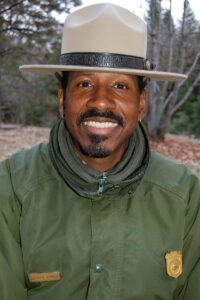
Growing up in Detroit, Shelton Johnson had never been to a mountain range until he visited the Bavarian Alps at the age of 5 with his family, when his father was stationed in Germany while in the Air Force. “I had no idea it would be the most significant moment in my childhood,” he says. The award-winning, high-profile park ranger began his career in 1987 at Yellowstone, then moved on to Washington, D.C., Great Basin, and since 1994, has worked in Yosemite National Park. As a community engagement specialist, he helps introduce visitors to the park’s natural and cultural history, and is an activist in getting culturally diverse communities into the outdoors.
Johnson’s research on Buffalo Soldiers in national parks like Yosemite and Sequoia led to his sharing their story in print, on camera, and in person during evening programs and daytime ranger walks. He has appeared in filmmaker Ken Burns’ series on PBS, “The National Parks: America’s Best Idea,” and convinced Oprah to help in efforts to connect African Americans to their national parks when she and her best friend Gayle King camped in Yosemite in 2010. His 2009 novel, Gloryland, tells the story of a sharecropper’s son who leaves South Carolina, becomes a Buffalo Soldier, and is eventually posted to Yosemite in the early 1900s.
As we grapple with the role of race and exclusion in the wilderness, Johnson’s novel and his views on Muir, as well as the connection between the civil rights and national park movements, give us a fuller picture of the complete idea of freedom, and what it means to have an inheritance in our national parks.
What changed in the American way of thinking that allowed for the idea of national parks?
Our national parks constitute America’s best idea, but what I think is also important to communicate is that doesn’t necessarily mean the United States had the first national park. With the Yosemite Grant on June 30, 1864, Yosemite Valley is the cradle of the national park idea, but there were expressions of that same concept in other countries early on. The difference is that idea didn’t spread because the world was not ready yet for the notion of a national park. Western Civilization still had more of an acquisitive, extractive mentality. What changed things was the movement known as Romanticism. My degree is in English Literature, so when you study poets such as Keats, Shelley, and Byron, when you look at the Transcendentalists (like Ralph Waldo Emerson and Henry David Thoreau) who obviously influenced John Muir, there’s a different mindset in terms of the relationship with the land. The Industrial Revolution played a huge role in shaping that.
The national park idea isn’t just about national parks. What it really speaks to is a shift in human perception with regard to nature. This whole thing about parks being created is really the notion of timing, just like you shouldn’t plant a seed in the ground at the wrong time. You have to plant at the right time if you want to have a crop the following year. America and Europe were ready to look at nature in a less acquisitive way, and more in a way that was heartfelt, that was spiritual in seeing these connections to God and a higher power. That was all possible because of the shift in time, human perception, and active engagement with the wild.
If people want to experience a place in the United States that still has that sort of acquisitive and extractive mindset, all they have to do is go to a frontier, to the edges of wilderness. The American West never ended, it just went to Alaska. Look at what’s happening right now with oil in Alaska and how there’s a battle between protecting wildlife and pristine areas vs. the needs of industry to power and fuel our society. It’s that push-pull that’s happening — it’s the 19th century all over again.
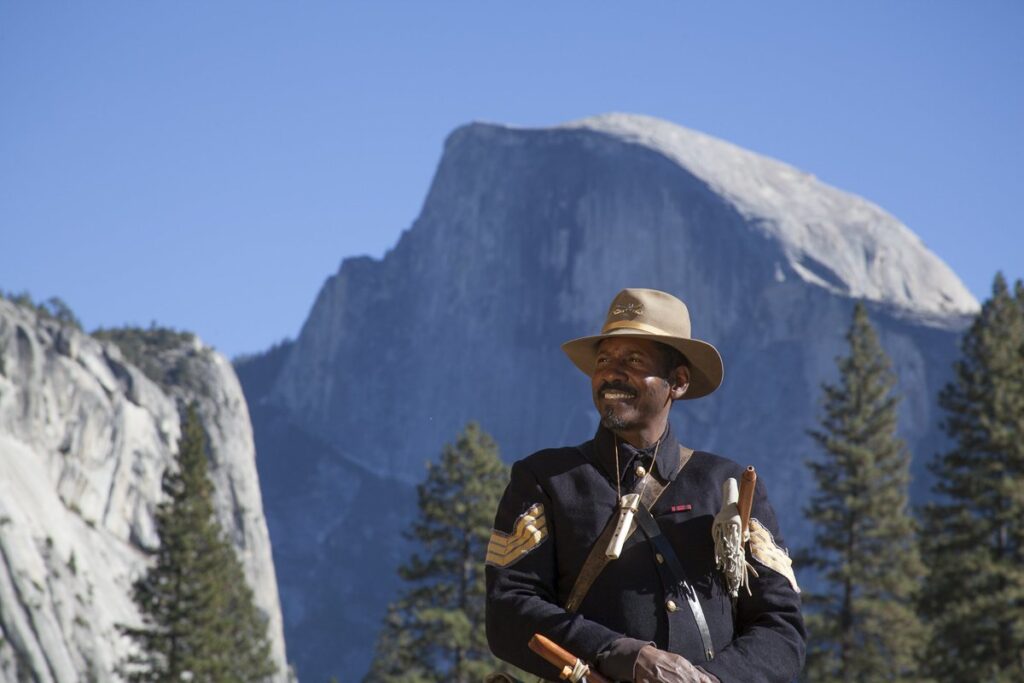
What other parallels in history have existed with parks and American culture?
In our American story, it’s as if we’re all on a train, moving in the same direction even though we may be in different cars, but we don’t look at the tracks to see how there’s a parallel path between civil rights and the rights of the earth itself. There are forces at work that are holding those two parallel tracks together to keep them stable, but our society tends not to yoke those two ideas together. We think of them separately: wilderness, which is basically civil rights for the earth, and civil rights for people. By doing that, we’re missing our essential connection to the earth, and it’s likely why we’re having such a negative effect on the planet, because we no longer think of it as sacred. That’s also why we have an inability to truly communicate with Indigenous peoples around the world, because we look at the earth as a commodity, but they view it with reverence.
There are amazing parallels in terms of timing between the 1860s and the 1960s. In the 1860s, you have Abraham Lincoln signing the Emancipation Proclamation on January 1, 1863, and also signing the Yosemite Grant in 1864, which was the legal precedent for the Yellowstone Act. In the 1960s, as the Kennedy administration abruptly flowed into the Johnson administration, the Civil Rights Act was signed in 1964, and in the same year, the Wilderness Act was passed. We also have the assassinations of two sitting presidents, but all three presidents had to deal with unpopular wars: the Civil War and the Vietnam War.
None of this is happening by accident, nor is it by design. It’s somewhere in between. But there are connections between the Civil Rights movement and the Wilderness/National Park movement. We tend to not think of it in those terms, and so we internally blind our eyes to the fullness of that vision.
John Muir has been a hero for national parks and environmental protection, but a complete look at his life reveals racist comments about Black and Indigenous peoples, as well as friendships with people who worked for the conservation of the white race. How do you regard the full picture of the man?
When we look at John Muir, we have to look at his life within the context of the world that shaped him, and he was shaped by the racial attitudes that existed at that time. There’s so much nuance in the impact of all those associations, connections and conversations. I always say that most of history is really lost, because you can bring back a coin that was forged in ancient Rome, but you can’t bring back the hands of the people who held that coin, who passed it on to their brother or sister citizens of the Republic, or the observations that were sparked by those exchanges of currency and goods.
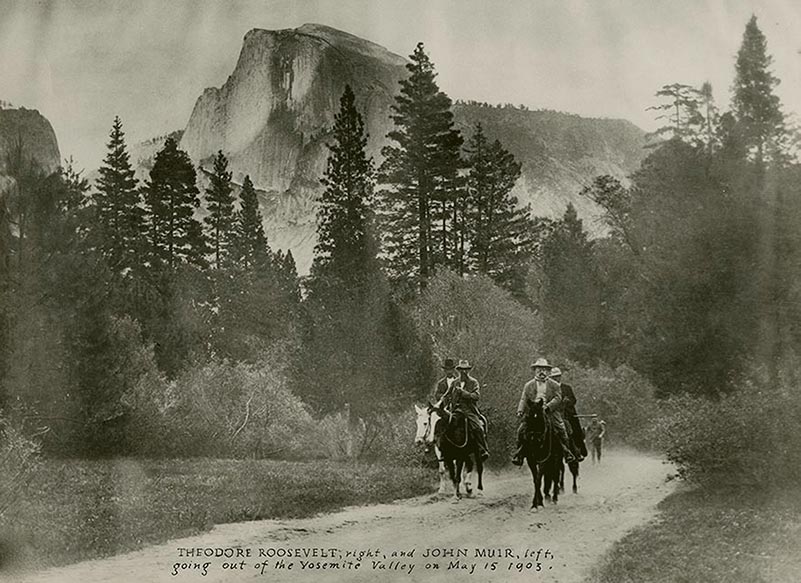
John Muir, in his thoughts and sentiments about the earth, was thinking in a parallel way to a lot of Indigenous people, not just at the time, but even today. One of his challenges was that he was so focused on the whole idea of wilderness, and on protecting the earth out of that Romantic tradition, that he wasn’t seeing clearly the other things that were happening. We habitually lock people in time. If they say something at a certain point, that becomes their statement for the ages. Yes, John Muir expressed some bigoted thoughts early on, and he also made less prejudicial statements about Native people and African Americans a little later in his life, but we have to view Muir within the context of his time; this was an America which saw the rise of Jim Crow, the creation of Black Codes in the South which undercut the 13th, 14th, and 15th Amendments, the creation of nearly 10,000 Sundown Towns across the U.S. which specifically criminalized the presence of African Americans in those towns after sunset, but even other ethnic groups such as Native Americans, Mexicans, Japanese, and even Jews were targeted. Through it all, African Americans faced widespread lynching and other acts of racial violence, while Asian Americans were targeted after the passage of the Chinese Exclusion Act of 1882.
All of this began to happen in the years subsequent to the end of the Civil War, the establishment of the first national parks from the Yosemite Grant in 1864 to the creation of Yellowstone, Sequoia, Yosemite, Mt. Rainier, Crater Lake, and finally Wind Cave National Park in 1903, which was also the same year that Ninth Cavalry troops were essentially serving as park rangers in both Yosemite and Sequoia National Parks. This was also the same time period which African American historian Rayford Logan referenced as “the nadir of American race relations,” meaning this was the lowest point of this centuries-old struggle for Civil Rights. Professor Logan would eventually draft President Franklin Roosevelt’s executive order prohibiting the exclusion of Blacks in the military in World War 2.
So, what we have here are two separate parallel rails; one of Race and one of Space, moving in the same direction 100 years apart, the fight for racial equality alongside the struggle for the preservation of the earth itself, with intersecting slats binding those two rails together during the presidencies of both Abraham Lincoln and John F. Kennedy/Lyndon Johnson, with the train of the Republic itself riding those rails to a future that still isn’t certain in our time, let alone in the time of John Muir.
If Muir was aware of that other track running alongside his efforts at Wilderness preservation, it’s a view that’s not obvious in any of his writings, but did the man actually see what his pen failed to record?
John Muir was an incredibly complex human being. He was a brilliant writer. You can read a passage of John Muir and know it’s not Thoreau or Emerson. It’s the stamp of his own unique psyche. But at the same time, it’s really hard to jump in a pool of water and come out dry. That’s what we’re asking with John Muir. He lived in an environment that was virulently racist. American racism of the late 19th and early 20th centuries, particularly the Jim Crow Laws, “inspired” Adolph Hitler and his treatment of the Jewish people. And yet our culture wants to say Muir is untouched. I’m not getting into how racist he might have been on the continuum of race. I’m just saying that it’s impossible for him to not have been influenced by the time period in which he lived because everyone, all of us, are influenced in so many ways by the time in which we are living.
That’s the messy part of evaluating heroes at different times in our history. Influence changes depending on where we are on the timeline.
The whole U.S. National Park evolution — the creation of Yellowstone, Sequoia, Yosemite, Mount Rainier, Crater Lake, Wind Cave — is happening on that parallel track at the exact same time as Jim Crow laws that legalized racial segregation. The wrong question is “Was John Muir racist?” There’s no way we can determine the level of racism that John Muir may or may not have had. I like using the term influence. I would say that it would be impossible for any American at that time to not be influenced by the racist attitudes that were present in the America of that time period.
Yesterday has always been the foundation for today. If patriarchy is working in your favor, if race is working in your favor, if wealth is working in your favor, you literally have the luxury of being oblivious to matters that are part of the waking experience of millions of other citizens.
The knee-jerk reaction among certain individuals when we’re having this conversation is, “Why can’t you people get over this? This was such a long time ago.” But yesterday has always been the foundation for today. If patriarchy is working in your favor, if race is working in your favor, if wealth is working in your favor, you literally have the luxury of being oblivious to matters that are part of the waking experience of millions of other citizens. And those who have been oblivious are “naturally” shocked by the Black Lives Matter movement, because they thought our society had finally made it, once Barack Obama became president.
What’s going on right now in the political sphere today is a reaction to what happened yesterday. It’s an attempt to reclaim the sense of being in power for a certain part of the population. For every action, there’s an equal and opposite reaction. We have to look at history in those terms. We can’t look at John Muir without acknowledging the lenses through which we’re peering at this historic figure. Before we blame John Muir for having some of the same bigoted thoughts as many of his contemporaries, we have to remember that most Euro-Americans of that time would by today’s standards be considered bigoted, biased, and prejudiced, while those wielding real power would fit precisely the definition of a “racist.” John Muir was a flawed human being, but I’ve yet to meet someone who wasn’t! We need to look at historic figures fully, and not cast them into bronze or marble, because then we blind ourselves to their failings, and it’s those “faults” that ultimately make them human beings.
Your novel, “Gloryland,” examines the life of a young man who leaves his sharecropping family in South Carolina to become a Buffalo Soldier and ultimately finds his spiritual home in Yosemite. How are you personally connected to that story?
I think of myself as a Black Indian. I need to acknowledge all of the bloodlines within me. I’m African, Cherokee, Seminole, and Irish. I do that primarily because I don’t want that to be forgotten. My character in the book is a Black Indian, because if you are a Black Indian serving the United States Army in the cavalry during the Indian Wars, it’s going to be at the forefront of your mind that you’re killing people who remind you of your own people.
It was safer for my dad to serve in the infantry in Korea than live as a Black man in South Carolina in the 1940s.
My dad was born in 1929 and grew up in Spartanburg, South Carolina. He had nothing positive to say about what life was like growing up in South Carolina, which was extremely racist at the time. My grandfather essentially told my dad that if he didn’t leave the South, he would find him hanging from a tree. So, my father joined the military for safety. Yes, it was safer for my dad to serve in the infantry in Korea than live as a Black man in South Carolina in the 1940s.
We have to remember that when we read the Emancipation Proclamation or the 13th, 14th and 15th Amendments, the intent of those documents were undercut by Jim Crow laws. The 13th Amendment said we were free, but how can you really be free if you stop to rest in a southern town and are arrested for vagrancy and put on a chain gang for the rest of your life? The 14th Amendment granted us full citizenship, but how can it be full if you can’t eat in a restaurant or sleep in a hotel like everyone else? With the 15th Amendment, we had the right to vote, but you had to pass a literacy test, which was designed for failure. But let’s say you could pass it. You had to have money to pay the poll tax. If you’re a sharecropper in Alabama, you don’t have extra money to do that.
Those codes that came into effect in the latter half of the 19th century were there symptomatically because many white Southerners didn’t like what was happening after Reconstruction. The irony is that the parks were coming into being at the same time.
Colonel Charles Young, the first African American national park Superintendent, was in Sequoia National Park at the same time John Muir spent time in Yosemite. In your study of Buffalo Soldier history, did you find evidence that they crossed paths?
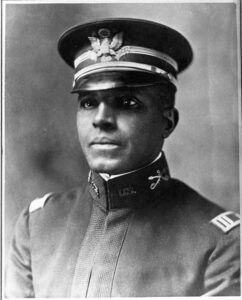
I have found no evidence that they met. They could have. When I was doing my research, it was all primary research because there weren’t books on the Buffalo Soldiers in Yosemite and Sequoia at the time. I came across a story indicating that in 1903, Charles Young, who was the acting military superintendent of Sequoia, was called away for a meeting in Yosemite. That was the year Roosevelt and John Muir spent time together in Yosemite, and it was that same summer that Charles Young went to Yosemite for a meeting.
Who was in the meeting? What were they talking about? What would require the acting military superintendent of Sequoia to go to Yosemite? Remember, Yosemite Valley was not the headquarters for the park, it was the Wawona area. The valley didn’t become part of the national park until after 1905. But I’ve found nothing else about that meeting, and whether or not Young actually made that trip to Yosemite.
What do you want people to know about the legacy of the national parks?
Everyone has a story. The best way to connect with people is through story. It’s something that’s at the cellular level in all human beings. There’s something magical that happens when a family is sitting around a campfire and they’re telling stories, and they’re bonding. Those memories become some of the most important memories in our lives. Dayton Duncan had those memories and convinced Ken Burns to make a national park film. He said, “I’ve got this great idea for a story. It begins during the Civil War.” That was the hook, because the most celebrated film up until that point, was Burns’ film, The Civil War. And indeed, the Yosemite Grant was signed during the Civil War.
There’s something magical that happens when a family is sitting around a campfire and they’re telling stories, and they’re bonding. Those memories become some of the most important memories in our lives.
I’ve talked about the parallels between the Civil Rights movement and the Wilderness movement. Every once in a while, a connecting tie shows up, like the ties connecting the rails of a train track, and you see it. We tend to have different conversations with different sets of people when we’re talking about wilderness and when we’re talking about civil rights. And those connections need to be addressed. Because you can’t talk about parks without talking about race, as most of the national parks, if not all of them, were historically the homeland of Indigenous people.
I have a blood tie to Great Smoky Mountains National Park. The Smokies were the traditional homeland of the Cherokee people, and I’m Cherokee. My immediate ancestors (on my mother’s side) didn’t come from Tennessee, they came from Oklahoma. That means I have ancestors who were on the Trail of Tears, which is just about the only way they could have gotten to Oklahoma. It’s putting a spotlight on those unseen connections that makes history really come alive. What are the other unseen connections between race and parks that are essentially invisible to us right now?
Representation matters when we’re trying to ensure access to our outdoor spaces. How has your job evolved to incorporate outreach to culturally diverse communities?
I’ve always felt that it’s far easier to reach people that you have some understanding of than people who are strangers to you. Because I’m African American and because I grew up in Detroit, I have an internal recognition that when the National Park Service started to reach out to people of color to bring them into the fold, it was during the administration of John F. Kennedy. There were few women and people of color in the parks before the 1960s. President Kennedy’s Secretary of the Interior was Stuart Udall, and the Director of the National Park Service was George Hartzog.
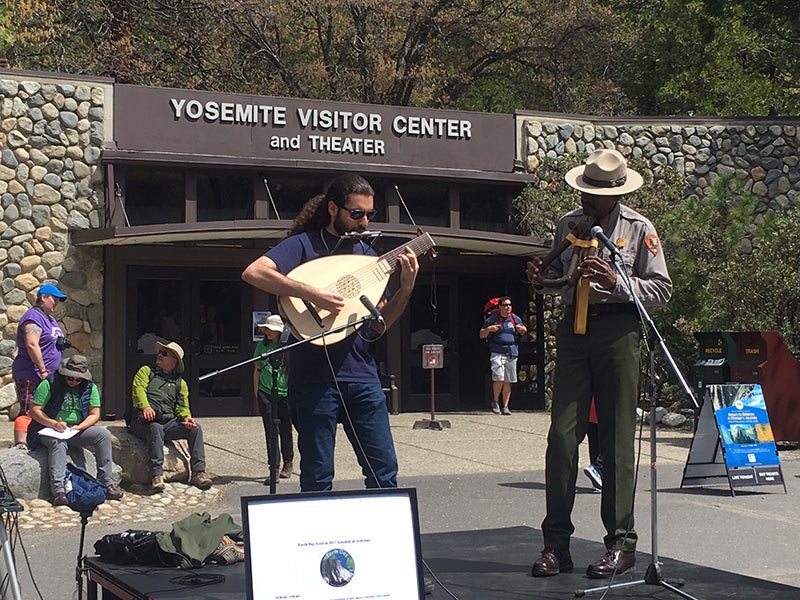
Robert Stanton, who later became the first African American director of the NPS, came on board around that same time. I’m a later generation, but any African American ranger working in the NPS in the 1960s and 1970s was a real pioneer! It’s one thing for the National Park Service to be told that they need to diversify their ranks, but when it’s coming from the inside, that’s when change really takes place. We need Rosa Parks, we need John Lewis, we need all of those individuals and their collective stories, to make it overwhelmingly clear that change has to happen. That’s why the March on Washington in 1963 to a great degree was the mountaintop of the Civil Rights movement because the whole world was watching and recognized they were witnessing an event of great significance for all of humanity.
My focus is on the people who are citizens of this country who have an inheritance in our national parks but have not been told that they’ve received the gift beyond any reckoning. That’s the best way to communicate a message, to not have it vague and dispersed, but to look right in someone’s eyes and tell them “You are welcome in this park. This is your home. This is your inheritance.”
That’s a simple, but powerful statement.
I was born in 1958, and when I look at my birth certificate, it says “colored” in terms of race. In my own life, I’ve been colored, Negro, Black, Afro-American, and African American. Those are five labels I’ve internalized in my life. If someone on the outside says, “That’s because you don’t know who you are,” I would say, “No, that’s because I’ve not been given the space, nor the power to determine who I am, because I’ve been defined by that oppressive state which until the 1960s was America.”
Being able to define who you are is expressing power, and that’s one of the reasons why I so clearly remember a “call” from my childhood “Say it loud, I’m Black and I’m proud!” or today when so many people remarked on how the film Black Panther was empowering for African Americans to see the “reality” of a Wakanda, because you’re finally witnessing an African nation that has this veneer of just getting by, just surviving, but then when you get there, it’s a complex, beautiful, futuristic city! It’s empowering to finally see other people of African descent who are brilliant, highly educated, and have this technology above anybody else on the planet, precisely because of the traditional portrayal of African people in Hollywood films since the beginning of that industry.
Is there another occasion in history that you’ve recently taken another look at to understand it more deeply?
I listened again to Martin Luther King’s “I Have a Dream” speech, paid attention to what he was saying on the steps of the Lincoln Memorial, and took notes. He started out with the Emancipation Proclamation, he went on to “100 years later, the Negro still is not free,” and finally he talked about segregation, discrimination and poverty, and how our Constitution and Declaration of Independence basically constitute a promissory note to which every African American was to fall heir. Then he got to “we’re here today to cash a check,” referencing once more that promissory note, meaning America made a promise to Black people, but didn’t live up to it, so we’re here now to cash that check. To make good on that promissory note. He went on to talk about police brutality, and then spoke about being free in a place where you’re not truly free. Essentially, stating that we’ve been reliving one terrible day, over and over again, from the 1860s to the 1960s. But the difference was that the liberation that Dr. King specifically addressed at the end of his speech when he stated, “free at last, free at last, thank God almighty we are free at last!” had finally been expanded into a collective freedom, not just for African Americans, but for all of humanity.
Find more from Shelton Johnson on Instagram and buy his book Gloryland. When he craves cheesecake (which he says has “proven spiritual health benefits”), cake, or pie, he gets it at the Sugar Pine Café in Mariposa, California.
Top photo: Yosemite Conservancy/Keith Walklet
